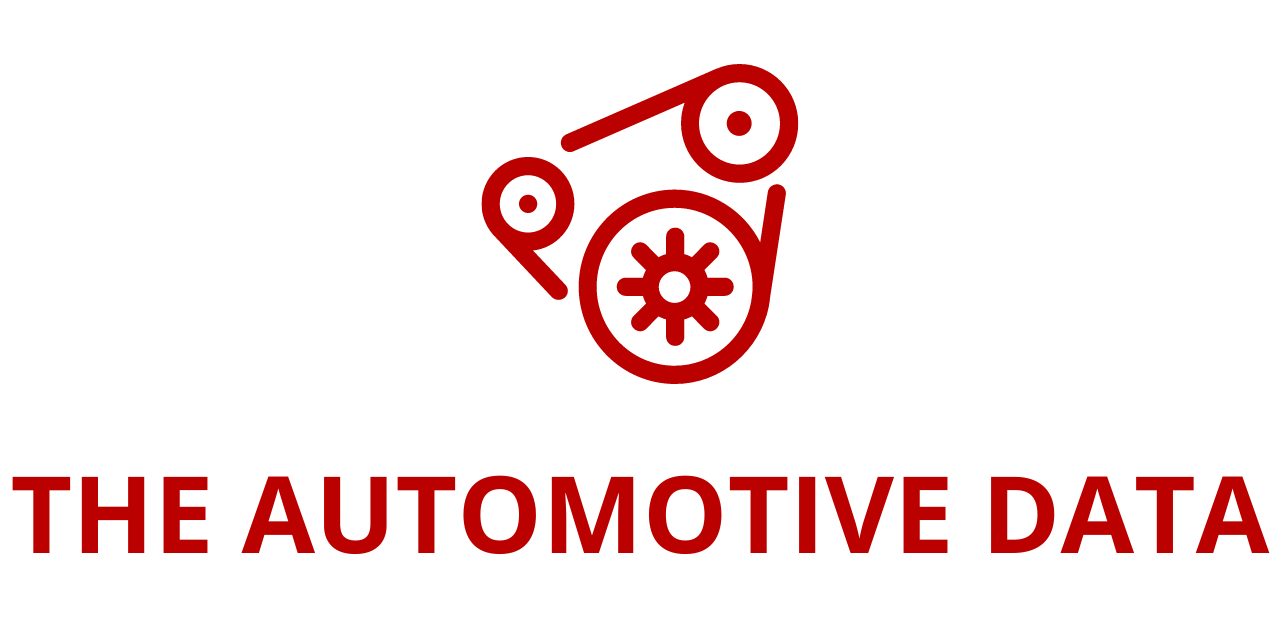
Rising ADAS and AV Adoption to Propel Global HD Maps Market Through 2032
The global HD maps for autonomous driving market is on track for steady expansion, nearly doubling from USD 1.09 billion in 2025 to USD 2.19 billion by 2032, at a CAGR of 10.5%. This growth is powered by the rapid evolution of autonomous and semi-autonomous vehicles, advances in AI and sensor fusion, and the need for centimeter-level, context-aware navigation in increasingly complex traffic environments.
This article explores key market drivers, major players, technology trends, regional outlook (with a focus on Europe), and how HD maps are becoming a core enabler for Levels 2–5 automation.
What Are HD Maps for Autonomous Driving?
High-definition (HD) maps are ultra-precise, machine-readable maps designed specifically for automated and autonomous driving. Unlike conventional navigation maps, HD maps include:
- Lane-level details (lane boundaries, types, widths, curvature)
- Traffic infrastructure (signals, signs, crosswalks, speed limits)
- Roadside objects and landmarks for localization
- Semantic information that provides context (e.g., type of intersection, pedestrian zones)
These maps act as a “prior knowledge layer” for the vehicle, complementing sensors like LiDAR, radar, cameras, and GPS. They allow automated vehicles to anticipate upcoming road situations, make smoother decisions, and maintain safety even when sensor visibility is impaired.
Market Overview and Growth Outlook (2025–2032)
According to the “HD Maps for Autonomous Driving Market by Service Type, Vehicle Type, Solution Type, Usage, Level of Automation, and Region – Global Forecast to 2032”:
- Market size 2025: USD 1.09 billion
- Market size 2032: USD 2.19 billion
- CAGR (2025–2032): 10.5%
- Scope: Global, across passenger cars (PC) and commercial vehicles (CV), and across Levels L2 to L5 automation.
Growth is driven by:
- Increasing penetration of ADAS (L2/L2+) and L3 features in premium and eventually mass-market vehicles
- Early commercialization of robotaxis, autonomous shuttles, and freight vehicles
- Expansion of connected infrastructure and V2X in major markets
- The need for highly reliable localization and navigation in dense, complex urban environments
Key Market Drivers
1. Growing Adoption of Autonomous and Semi-Autonomous Vehicles
HD maps are becoming a foundational component of:
- L2/L2+ driver-assistance (adaptive cruise control, lane centering, automated lane change)
- L3 conditional automation (hands-off driving in defined scenarios)
- L4/L5 robotaxis and shuttles
As automakers and mobility providers expand pilot programs and commercial deployments, HD maps are required for:
- Centimeter-level localization
- Accurate prediction of road geometry ahead
- Safer operation in complex urban and highway environments
2. Next-Generation Mapping and Data Collection
Modern HD mapping relies on:
- Fleets of sensor-equipped vehicles (LiDAR, radar, cameras, GNSS)
- Continuous crowdsourced data from production vehicles
- Cloud-based sensor fusion pipelines that transform raw sensor data into map layers
This continuous-update model ensures maps reflect:
- New construction
- Lane changes, closures, and detours
- Updated signs, traffic rules, and speed limits
3. Emergence of Autonomous Urban Mobility Applications
Autonomous solutions are spreading across:
- Robotaxis and ride-hailing
- On-demand shuttles
- First/last-mile and campus mobility services
Urban environments involve complex junctions, dense traffic, vulnerable road users, and dynamic events. HD maps provide:
- Contextual awareness of crossings, bike lanes, bus lanes
- Better understanding of priority rules and complex intersections
- Enhanced ability to plan safe, efficient trajectories
4. Rising Adoption of L2 and L3 ADAS-Equipped Vehicles
Many new vehicles now come equipped with advanced driver assistance as standard or optional. Automakers are:
- Introducing navigation-on-autopilot / highway pilot features
- Leveraging HD maps to enable hands-off driving in defined conditions
- Using map-based horizon data to smoothen vehicle behavior (curves, slopes, exits, speed changes)
As more vehicles with ADAS connectivity hit the road, HD map usage scales rapidly.
Restraints and Challenges
Despite strong growth potential, the HD maps for autonomous driving market faces several challenges:
Lack of Global Standardization
- Different regions and players use distinct data models, formats, and standards.
- This fragmentation makes cross-border scaling harder and increases integration costs.
Reliability in Untested or Rapidly Changing Environments
- Autonomous systems must operate safely even on roads with little prior HD coverage or rapid changes.
- Ensuring map accuracy in rural, developing, or frequently changing areas remains a challenge.
High Cost and Technical Complexity
- Building and maintaining HD maps is capital- and compute-intensive.
- It requires:
- High-resolution sensors and drive campaigns
- Massive data storage and processing infrastructure
- Real-time or near-real-time update mechanisms
- Fusion of multi-sensor inputs in real time is technically complex, especially as fleets scale globally.
Dependence on Connectivity and Edge Computing
- Many advanced features rely on cloud connectivity, high-bandwidth networks, and edge computing.
- In areas with poor network coverage, ensuring consistent performance is difficult unless robust embedded/offline solutions are available.
Emerging Opportunities
Integration with Traffic and Infrastructure Systems
As cities deploy smart infrastructure, HD maps can incorporate live feeds and standardized interfaces from:
- Connected traffic lights and signs
- Smart parking systems
- Roadwork and incident information
This allows optimized routing, better congestion management, and more efficient use of road capacity.
Map-as-a-Service and Flexible Business Models
New models are emerging beyond traditional one-time licensing:
- Subscription-based access to continuously updated maps
- Crowdsourced “data-as-a-service” (DaaS) platforms
- Pay-per-use or per-vehicle, per-region pricing
These flexible models help automakers and fleets scale HD mapping more economically.
Adoption in Emerging Markets with 5G Rollout
As 5G networks expand in Asia, Latin America, the Middle East, and Africa:
- Large, fast data pipelines become more practical
- Cloud and edge-supported HD map services can be reliably delivered
- Emerging markets gain the infrastructure needed for connected and autonomous mobility
Key Industry and Technology Trends
1. Semantic Mapping
HD maps are evolving from static geometry to semantic-rich representations that identify and classify:
- Crosswalks, bike lanes, and bus-only lanes
- Types of intersections and priority rules
- Traffic signs and lights, including state where possible
Semantic mapping improves contextual understanding, making automated driving more human-like and safer.
2. Blockchain and Secure Data Sharing
To enhance trust and integrity of map updates across fleets:
- Blockchain and secure data-sharing frameworks are being explored to:
- Verify data provenance
- Track updates and changes
- Prevent tampering
This is especially relevant when data is aggregated from multiple OEMs and fleets.
3. Energy-Efficient Mapping and Processing
As vehicles become more compute-intensive:
- There is increasing focus on energy-efficient mapping algorithms
- Techniques are designed to reduce computational load on vehicle ECUs while maintaining accuracy
- Intelligent compression, edge preprocessing, and hierarchical map structures help limit bandwidth and power consumption.
4. Generative AI in HD Mapping
Generative AI is starting to reshape HD mapping workflows:
- Accelerated map creation and updates from raw sensor data
- Synthetic data generation to fill gaps and train perception models
- Better localization accuracy via AI-enhanced fusion of map and sensor inputs
- Dynamic map personalization, adapting content to specific vehicle use cases or driver preferences
5. Impact of Mapless Autonomy
Some players explore mapless autonomy relying purely on onboard perception and learning. While this could reduce dependence on HD maps in certain scenarios, in practice:
- Hybrid approaches are emerging, where HD maps are used in high-value or complex environments
- Mapless techniques may handle simpler or less-mapped roads
- Together, they form flexible, resilient navigation strategies.
Solution Type: Why Embedded HD Mapping Is So Important
By solution type, embedded HD map solutions are projected to capture a significant share of the market.
Embedded solutions:
- Run directly on the vehicle’s onboard computers
- Process map and sensor data locally, minimizing latency
- Enable real-time localization and path planning, even when connectivity is poor or unavailable
- Offer offline operation, crucial for safety and user trust
These systems integrate:
- Live data from vehicle sensors (LiDAR, radar, cameras)
- V2X communication inputs
- Local map tiles stored on the vehicle
This ensures that the vehicle maintains an accurate, up-to-date view of its surroundings, even in remote or connectivity-challenged areas.
Key players offering embedded HD map solutions include:
- HERE (Netherlands)
- Baidu Inc. (China)
- Hyundai Autoever (South Korea)
- Mapbox (US)
Some real-world examples:
- Volvo EX90 and Polestar 3 are among the first to use Google’s embedded HD maps to enhance driver assistance and automated driving features.
- NIO ET7 offers an offline HD map mode in its Navigation on Pilot system, allowing use where internet access is limited or absent.
- BMW’s Personal Pilot L2+ leverages HERE’s embedded HD maps for “on-map” driving, integrating known road geometry and features into the control loop.
With advances in semiconductors and sensor-fusion algorithms, embedded HD mapping is becoming more affordable, power-efficient, and scalable across vehicle segments.
Level of Automation: Strong Growth in Level 4 and Level 5
By level of automation, the autonomous vehicles segment (L4 and L5) is projected to grow at a particularly strong rate.
Growth factors:
- Major AI, LiDAR, and sensor fusion advances enabling highly automated driving without constant human oversight
- Heavy investments in robotaxis, autonomous shuttles, and logistics fleets
- Government programs and pilots under the smart mobility banner
Companies such as Waymo, Uber, and Baidu Apollo are already operating or piloting commercial robotaxi services in selected cities, relying heavily on HD maps for:
- Centimeter-level positioning
- Detailed understanding of lanes, curbs, and traffic controls
- Optimal route planning and safe navigation in dense urban environments
Recent developments mentioned in the forecast include:
- September 2025: Uber Technologies and Momenta plan to test Level 4 robotaxi services in Munich, Germany.
- August 2025: Kia partners with Autonomous A2Z to develop Level 4 self-driving cars on Kia’s PBV (Platform Beyond Vehicle) architecture, with a showcase planned at the 2025 APEC Summit in Gyeongju, South Korea.
In freight and delivery, autonomous trucks and delivery vehicles use HD maps to:
- Reduce logistics costs
- Address driver shortages
- Improve safety and predictability over long distances.
Regional Outlook: Europe as the Fastest-Growing Market
While HD mapping is a global opportunity, Europe is projected to grow at the highest rate during the forecast period.
Key growth factors in Europe:
- Stringent EU safety regulations and active regulatory work around automated driving
- Rapid expansion of L2+, L3, and future L4 systems in premium vehicles
- Strong government support for connected transport and smart infrastructure
- Numerous autonomous mobility trials in major urban centers
Leading players in the European HD mapping ecosystem include:
- HERE (Netherlands)
- TomTom International BV (Netherlands)
- Navmii (UK)
Recent initiatives reinforcing HD map adoption:
- August 2025 – HERE & DAF Trucks: MODI Project
- EU co-funded program to advance Level 4 automated freight transport.
- DAF contributes commercial vehicle expertise.
- HERE’s High-Definition Live Map (HDLM) acts as an external sensor, continuously updated with sensor data from DAF’s automated trucks.
- April 2025 – HERE & Lotus Robotics MoU
- Collaboration to develop an advanced Highway Navigation Pilot for L2+ automated driving.
- Combines Lotus’s perception stack with HERE’s HD maps to support hands-off capabilities under specific conditions.
- Intended for future Lotus vehicles and to be offered as a solution for other OEMs, with European regulatory approval targeted in 2025.
Case Studies Highlighted in the Report
The report includes several case studies illustrating real-world use of HD maps:
- Mercedes-Benz & HERE
Integration of HERE’s HD Live Map into the Drive Pilot Level 3 system, enabling conditionally automated driving on selected highways. - Intellias
Development and scaling of a cloud-based HD mapping and location data platform tailored to autonomous driving, demonstrating how software partners support automakers and map providers. - Magnasoft
Deployment of AI-driven continuous-improvement processes to detect traffic and road-condition changes in real time, feeding updates back into mapping systems. - Infosys
Implementation of multi-source HD mapping for ADAS in dense urban environments, combining various data streams to improve reliability.
Business Models and Ecosystem Evolution
The HD mapping ecosystem is moving towards more flexible, service-oriented models:
- Licensing & Subscription: Ongoing access to continuously updated maps.
- Crowdsourced DaaS (Data-as-a-Service): HD map providers harness fleet data from multiple OEMs and mobility operators.
- Pay-per-use or transactional models: Suitable for on-demand services or specific geofenced operations.
This shift aligns with the transition to software-defined vehicles, where much of the value lies in ongoing digital services rather than one-time hardware sales.
Key Technologies Shaping the Market
Some of the most important enabling technologies include:
- Multi-sensor fusion combining LiDAR, radar, cameras, and GNSS for high-precision mapping and localization
- SLAM (Simultaneous Localization and Mapping) adapted for HD map generation and refinement
- 5G connectivity and V2X communications, enabling fast data exchange and low-latency updates
- Edge computing to handle real-time processing closer to the vehicle
Competitive Landscape
The HD maps for autonomous driving market is led by a mix of global tech companies, specialized mapping providers, and automotive-focused software firms. Key companies featured include:
- HERE
- Baidu Inc.
- TomTom International BV
- NVIDIA Corporation
- Mobileye
- Waymo LLC
- Dynamic Map Platform Co. Ltd.
- NavInfo Co. Ltd.
- Luminar Technologies, Inc.
- The Sanborn Map Company, Inc.
- Momenta
- Mapbox
- CE Info Systems Ltd. (MapmyIndia)
- Navmii
- RMSI
- Zenrin Co. Ltd.
- Woven by Toyota, Inc.
- Swift Navigation, Inc.
- Imerit
- Voxelmaps
- Hyundai Autoever Corp.
- Genesys International Corporation Ltd.
- Geomate
- Intellias
- Morai Inc.
These firms participate across the value chain—from raw data collection and HD map production to cloud platforms, embedded software, and integration services for OEMs and mobility providers.
Why This Report Matters for Stakeholders
Purchasing and studying the HD Maps for Autonomous Driving Market report helps:
- Market leaders and new entrants
- Understand revenue potential across segments and regions
- Identify where to invest in technology, partnerships, and pilots
- Automakers and Tier-1 suppliers
- Benchmark HD mapping strategies
- Define go-to-market and deployment roadmaps for L2–L4 functions
- Technology and mapping companies
- Understand competitive positioning
- Align product strategies with evolving trends (AI, 5G, V2X, Map-as-a-Service)
- Investors and policymakers
- Gauge how HD maps support safer, more efficient mobility ecosystems
- Assess regulatory and infrastructure gaps that must be addressed
With its detailed segmentation, case studies, and analysis of drivers, restraints, challenges, and opportunities, the report provides a comprehensive picture of how HD maps will underpin the next decade of autonomous and connected mobility, from advanced driver assistance to fully autonomous robotaxis and freight fleets.
Source Link:https://www.businesswire.com/







